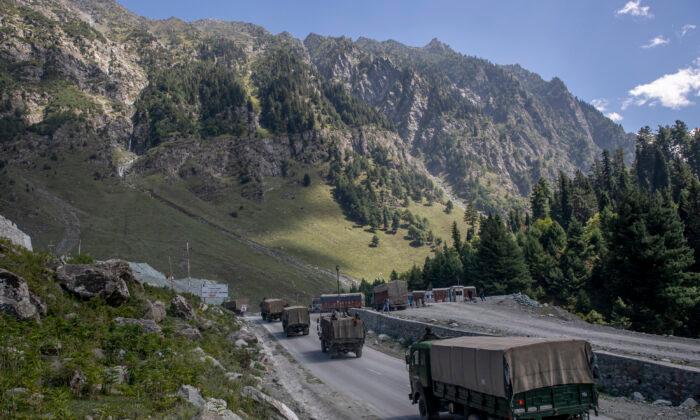On July 8, President Joe Biden officially posited that the U.S. “military mission in Afghanistan will conclude on August 31”—retracting from the earlier plan of drawing down the forces by Sept. 11 (20th anniversary of 9/11). Biden’s move came in the wake of the Taliban’s increasing territorial foothold in Afghanistan, inching closer to Kabul—with the Taliban now claiming to be in control of 80 percent of Afghanistan since launching its offensive against the Afghan government. The offensive came against Biden’s announcement in April that the United States will not meet the deadline set under the U.S.-Taliban Agreement to withdraw all troops by May 1 and instead released a plan for complete drawdown by Sept. 11. Thereby, the U.S. troops’ withdrawal has met with successive military gains by the Taliban—bringing an end to the “peace process.”
While Biden’s decision on Afghanistan can be read in alignment with America’s growing tilt toward the Indo-Pacific region, but with uncertainty at its peak, the U.S. withdrawal holds security implications—both for Afghanistan and the region, at large. Here, instability is the watchword. To suggest so, as per Global Peace Index (GPI) 2021 report, South Asia remains to be the second least peaceful region in the world. With terrorism acting as the key cause behind the volatility, Afghanistan remains to be the least peaceful country in the region—a position it has held for the past four years in GPI’s rankings and with terrorism being the key cause of instability. In this respect, the U.S. withdrawal from Afghanistan only calls for greater instability, especially with the increasing Taliban control. While Biden suggests that “it’s the right and the responsibility of Afghan people alone to decide their future and how they want to run their country,” the Afghan people face the biggest dilemma on “how” to achieve this objective—whether to choose the Afghan government or the Taliban as the architect of Afghanistan’s future.
This dilemma is further aggravated by the creation of a “void” in the stability and security against the withdrawal of U.S. and NATO Troops from Afghanistan—gravely affecting the peace and stability of the region. The new contestation lies in “who seeks to fill the void.” Undoubtedly, the Chinese regime has been the frontrunner to rein in as the new “big power” in Afghanistan. While China has been critical of U.S. presence in Afghanistan but against the withdrawal of troops, Beijing has blamed Washington for the surge in violence and instability in Afghanistan—highlighting the dichotomy in China’s position. Here, the query is: in filling the void, can China guarantee stability in Afghanistan? Rather than replacing the United States on the grounds, the biggest challenge for Beijing will be fostering stability and security, as Afghanistan is already showing signs of increasing incidents of violence.
While Beijing talks about stability, its interests in Afghanistan are meant to serve its own agenda, in terms of infrastructure investments and regional influence opportunities, and this requires assurance of peace and stability of Afghanistan. However, Beijing’s interests in Afghanistan are not new given it made its desires known by hosting the first China-Afghanistan-Pakistan Foreign Ministers’ Dialogue in 2017. Identifying itself as a “good friend” of Islamabad and Kabul, Beijing expressed its willingness to “play a constructive role in improving Afghanistan-Pakistan relations” as well as to discuss “extending the China-Pakistan Economic Corridor (CPEC) to Afghanistan.” China’s role as a mediator is qualified by its neutral position on the Afghan government and the Taliban. It’s noteworthy that the fourth Trilateral Dialogue was held in June, wherein the three sides committed to “strengthening political mutual trust, enhancing exchanges and communication, and forging closer-good neighborly relations and partnership.”
While the Belt and Road Initiative (BRI) tops China’s Afghanistan agenda, Beijing’s choice is more integrated with its own internal security that concerns China’s fight against the “three evils.” Beijing perceives Islam in Uyghur-dominated Xinjiang as extremist and sees the East Turkestan Islamic Movement (ETIM) as its terrorist organization. In Beijing’s view, instability in Afghanistan is detrimental to security and stability of its restive Xinjiang region. Owing to these concerns, China’s priorities in Afghanistan, as officially stated by State Councilor and Foreign Minister Wang Yi are three-fold: first, avoid further expansion of the conflict in Afghanistan and in particular, an all-out civil war; second, restart intra-Afghan negotiation as soon as possible to achieve political reconciliation; and third, prevent all kinds of terrorist forces from taking advantage of the situation to grow in Afghanistan and not allow the country to again become a gathering ground for terrorists.
Whether China succeeds or not remains questionable, but the very fact that the regime is gaining ground in Afghanistan calls for concern—specifically in the context of the Taliban’s recent expressions of calling China a “friend” to Afghanistan and of welcoming Chinese investments for reconstruction work in the war-torn country. In view of this, China’s foothold in Afghanistan holds strategic implications for India. Providing a further boost to China-Pakistan “all-weather friendship,” the implications can be read in three ways. First, the extension of CPEC to Afghanistan will further add to India’s dilemma over Chinese intentions. India stands opposed to CPEC over sovereignty concerns given the passage of CPEC through Pakistan-occupied Kashmir. Second, China’s increasing affinity with the Taliban will provide a boost to Beijing’s interest to mediate between Afghanistan and Pakistan. Third, if Beijing succeeds in its role, it will try to export the China Model, which will not be in India’s interest.
The post-withdrawal of U.S. troops remains to be a grave security challenge, but it also provides Beijing with the biggest trump card to gain a foothold in South Asia against India. Therefore, India needs to be wary of the unfolding situation given the possibility of a China-Pakistan-Afghanistan nexus, which will only be detrimental to India’s national interest.





